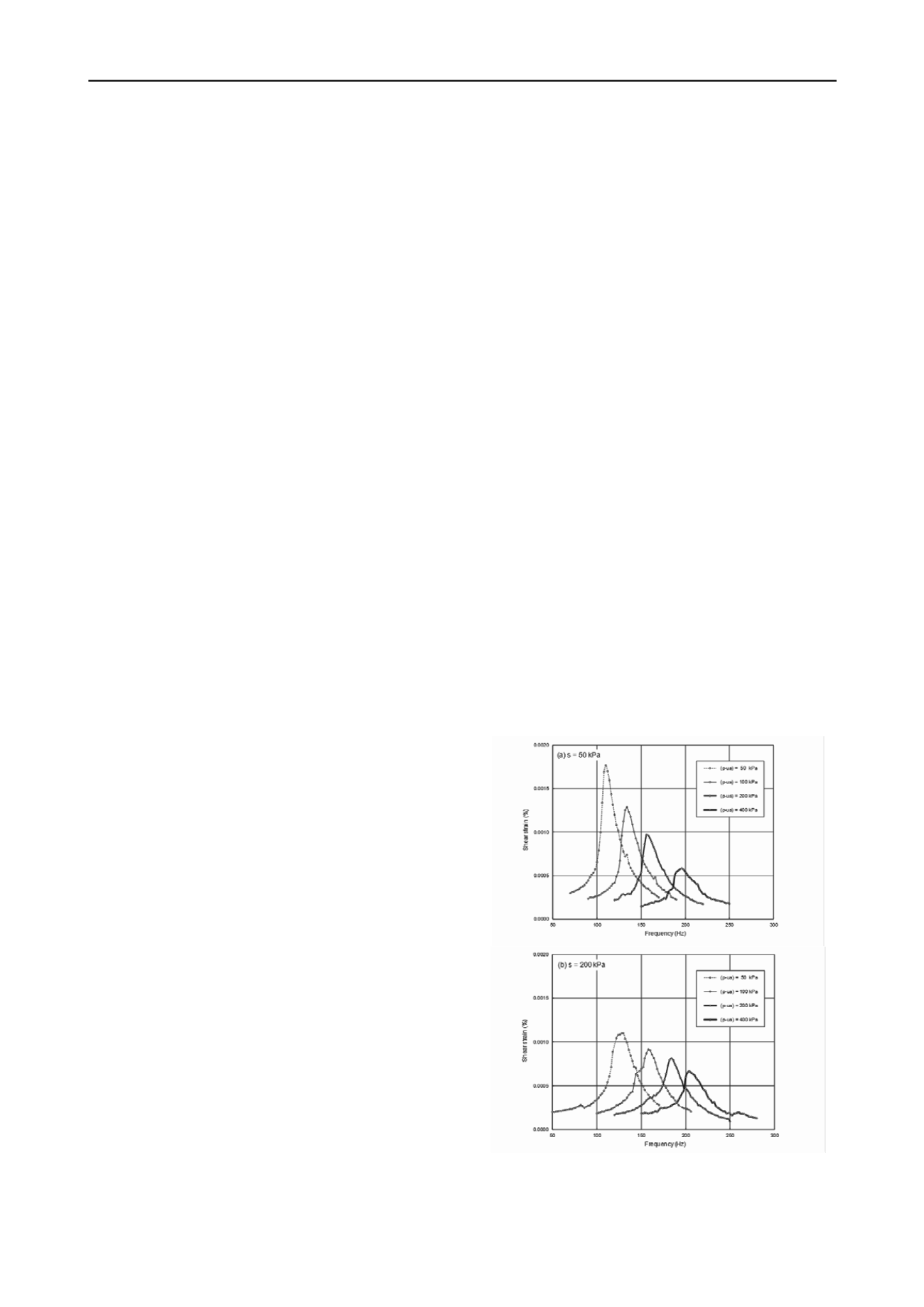
1065
Technical Committee 106 /
Comité technique 106
3 TESTING AND MODELLING THE MECHANICAL
BEHAVIOUR
A lot of effort in the field of unsaturated soil mechanics has
been devoted in the past to experimental investigation and
theoretical modelling of the mechanical behaviour of
unsaturated soils subjected to suction changes. This may be the
reason why the contributions dealing with conventional aspects
of the mechanical behaviour of unsaturated soils are few, and
mostly addressed to specific soils under a limited variety of
stress-paths.
The attention is mostly focused on materials used in
compacted earth constructions, either to evaluate the
performance of the as-compacted materials, or the effects of
weathering and of improvement techniques. These contributions
are mostly motivated by the need for assessing existing and new
embankments under seasonal change of moisture content, and
for increasing their resilience to extreme events. More attention
is devoted to the investigation of the mechanical behaviour of
unsaturated soils under cyclic and dynamic loading, which
typically characterise the working conditions of embankments.
Moreover, where the seismic risk is high, a necessity is felt for
proper criteria to assess embankments after relevant seismic
events, which may impair functionality under normal working
conditions.
3.1
Compacted natural and treated soils in earth construction
Bai et al.
(China) concentrated their attention on the behaviour
of a compacted loess like silt. Their study focuses on the
influence of compaction water content and compaction energy
on the compressibility of the soil. The data show that the
compressibility of this soil increases with water content for a
given energy. If the compaction energy is changed at a given
water content, the minimum compressibility is found to
correspond to the density for which the given water content
represents the optimum.
Degradation due to wetting and drying on Pierre Shale is
analysed by
Schaefer & Birchmier
(USA), motivated by
frequent slope instabilities observed in this formation and
extensive problems documented in the construction of dams.
The residual shear strength was analysed by means of ring shear
apparatus after drying and wettting weathering cycles.
Evaluation of physical properties, chemical analysis and
Scanning Electron Microscope images completed the evaluation
of the effects of weathering. The Authors observed minor
changes in mineralogy, but significant changes in the fabric of
the material, while no definite conclusions could be reached for
residual strength.
To stabilise compacted soils and to reduce the effects of
weathering, improvement techniques may be implemented.
Mavroulidou et al.
(UK) investigate the behaviour of lime
treated London clay, for use in stabilisation of roads and
pavements, as well as a technique to increase workability during
construction. Samples of lime treated London Clay were
prepared in the laboratory by static compaction after mixing
powder London clay and lime. After curing, with two different
techniques, the samples were tested in a triaxial equipment
under different controlled saturation conditions. A number of
triaxial tests were carried out to assess the effect of lime on the
hydro mechanical properties of statically compacted London
Clay and lime-treated London Clay samples. Filter paper was
used to study the retention behaviour of both the original and
the treated soil, in the suction range of interest. In view of the
use of the improved material in earth construction, the
experimental results suggest that a limited amount of lime could
be sufficient to stabilise the soil. The solution is considered
preferable to higher amounts of lime, as increasing the lime
would decrease the ductility of the soil.
3.2
Response of unsaturated soils to elastic waves
Three contributions analyse the response of unsaturated soils to
elastic waves, both as a mean of analysing the state of the soil,
and to predict the mechanical behaviour under dynamic loads.
Byun et al.
(Korea) use compression and shear waves to
analyse the response of a sand and a silty-sand as a function of
the degree of saturation. A common pressure plate extractor was
modified to apply axial stress and measure elastic wave
velocity. Bender elements and piezo-electric disk were mounted
in the cell to this aim. The results seem to suggest that for sand
the influence of stress level on the elastic stiffness is
predominant with respect to the effect of suction. The latter can
be better appreciated for the soil containing a higher amount of
fines.
Georgetti et al.
(Brazil) analyse a compacted clayey sand in
the whole range of shear strains, from small strain to failure.
Multistage triaxial tests were performed on unsaturated samples
kept at constant water content. Suction was measured during the
tests by means of axis translation technique. Tests were
performed with bender elements to investigate the influence of
suction and confining stress on small strain modulus. Also in
this case, the small strain modulus appears to be influenced
more by confining stress rather than suction, at least in the range
investigated. As expected, the effect of suction tends to become
more relevant at decreasing confining stress. Nonetheless this
result can not be considered a general conclusion, as in this case
the soil was investigated in a range of suction where the degree
of saturation – hence the state of the soil – hardly changes,
keeping around 60.
Dynamic properties of unsaturated sandy silt are studied in a
broader sense by
Hoyos et al
. (USA) with a proximitor-based
resonant column device. The device developed by the Authors
includes bender elements and allows for testing soils under
controlled suction conditions by means of axis-translation
technique. Stiffness and damping are investigated, the latter
after careful inspection of the influence of suction on the
frequency response curves (Fig.6).
Figure 6. Frequency response curves from SM soil at different net
confinement and suction states: (a) s = 50 kPa; and (b) s = 200 kPa
(from
Hoyos et al.
)


